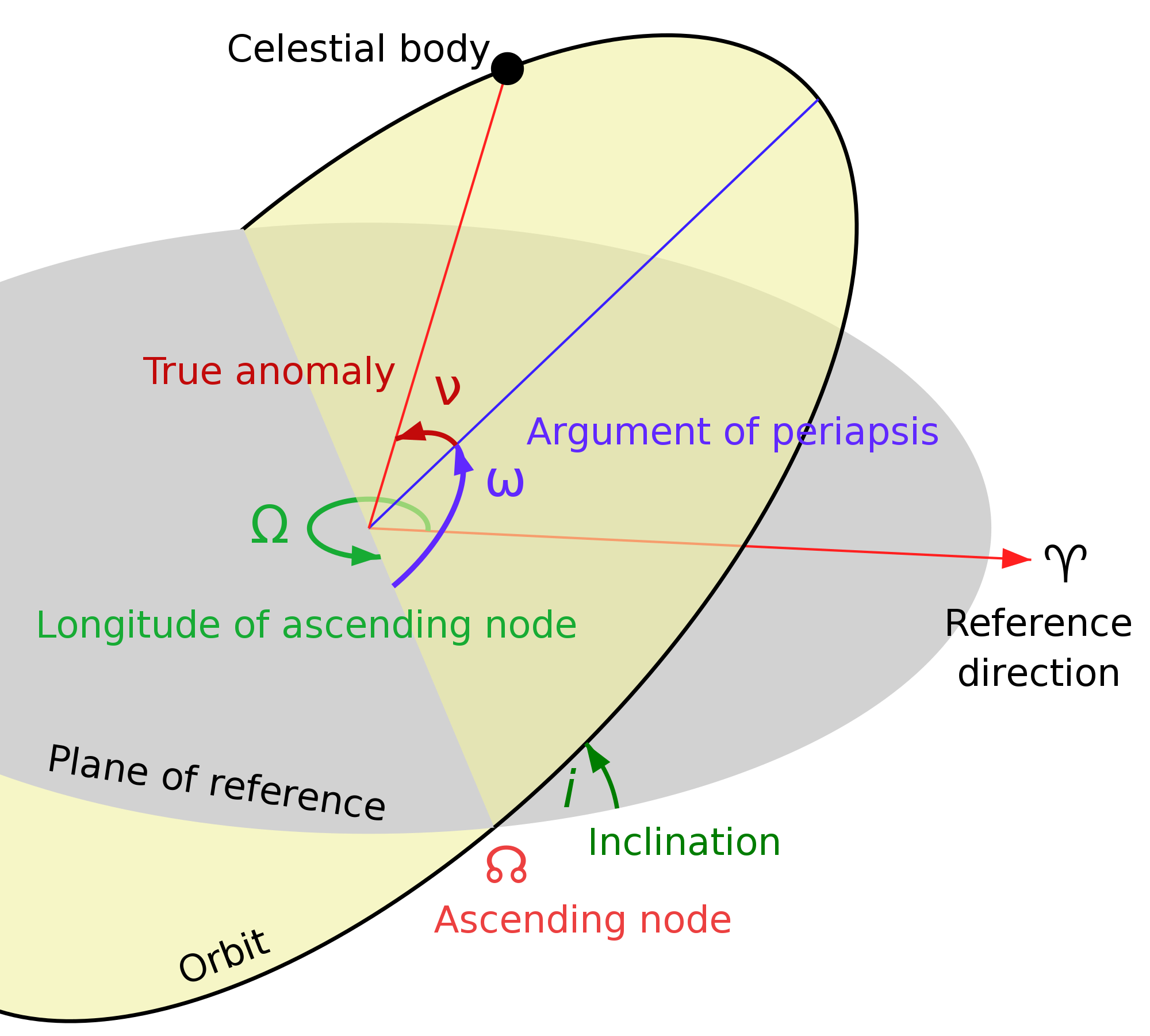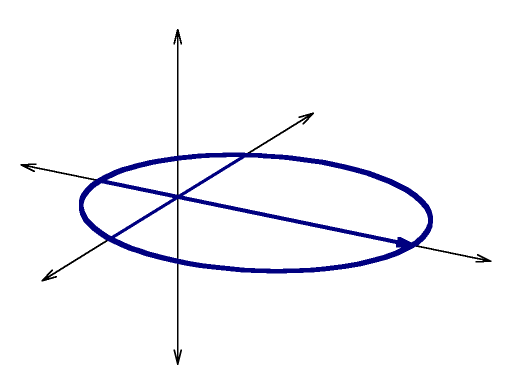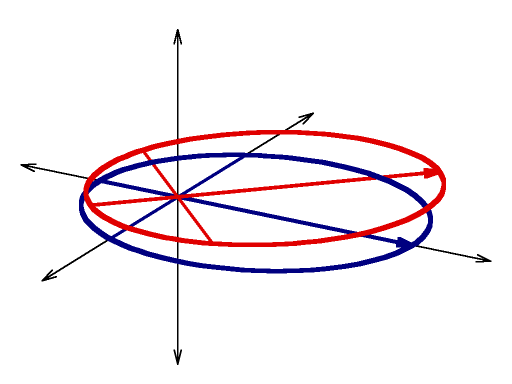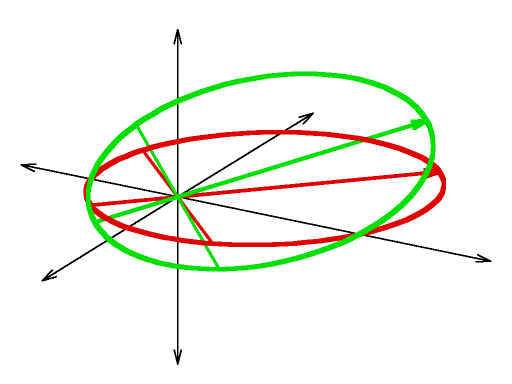|
Size: 3452
Comment:
|
Size: 3500
Comment:
|
| Deletions are marked like this. | Additions are marked like this. |
| Line 25: | Line 25: |
| || $ v_a $ || apogee velocity (m/s) || $ ( 1 - e ) v_0 $ || || $ \theta $|| true anomaly, orbit angle from perigee || ||$v_{\perp}$|| velocity perpendicular to radius || $ v_0 ( 1+e \cos( \theta )) $ || ||$v_{\perp}$|| velocity perpendicular to radius || $ v_0 ( 1+e \cos( \theta )) $ || || $ v_r $ || radial velocity || $ e v_0 \sin( \theta ) $ || |
|| $ v_a $ || apogee velocity (m/s) || $ ( 1 - e ) v_0 $ || || $ \theta $|| true anomaly, orbit angle from perigee || radians or degrees || || $ r $|| radius (m) || $ a ( 1 - e^2 ) / ( 1 + e \cos( \theta ) ) $ || ||$v_{\perp}$|| velocity perpendicular to radius (m/s) || $ v_0 ( 1 + e \cos( \theta ) ) $ || || $ v_r $ || radial velocity (m/s) || $ e v_0 \sin( \theta ) $ || |
Changing Orbits to M288
How do we get from any arbitrary orbit to M288? The following techniques may not be optimal for minimal \Delta V , but they set an upper bound. We will assume Kepler orbits and a circular M288 destination orbit, and heavy objects unaffected by light pressure. Actual thinsat orbits are elliptical and precess over a year with J2 and light pressure.
The origin elliptical Kepler orbit has four parameters we need to compute two \Delta V burns for our transfer orbit: |
Maneuvers use the least \Delta V farther out, so we will use different strategies depending on whether the apogee of the origin orbit is higher or lower than the M288 orbit r_288 .
Describing an arbitrary Kepler Orbit
Blue curve: |
|
Red curve: |
|
Green curve: |
gnuplot source and you will need to crop and convert and resize using gimp to reproduce the above images.
\mu |
earth gravitational constant |
3.986004418e14 m3/s2 |
|
T |
sidereal orbital period (s) |
{ 2 \pi } \over \omega |
|
a |
semimajor axis (m) |
0.5 ( r_a + r_p ) |
$ \left( \mu \left( T \over { 2 \pi } \right)2 \right){1/3} |
e |
eccentricity (unitless) |
{ { r_a } \over { a } } ~-~ 1 |
{ { r_a - r_p } \over { r_a + r_[ } } |
r_p |
perigee, periapsis (m) |
a ( 1 - e ) |
|
r_a |
apogee, apoapsis (m) |
a ( 1 + e ) |
|
v_o |
orbit velocity (m/s) |
\sqrt{ \mu ( 1 - e^2 ) / a } |
|
v_p |
perigee velocity (m/s) |
( 1 + e ) v_0 |
|
v_a |
apogee velocity (m/s) |
( 1 - e ) v_0 |
|
\theta |
true anomaly, orbit angle from perigee |
radians or degrees |
|
r |
radius (m) |
a ( 1 - e^2 ) / ( 1 + e \cos( \theta ) ) |
|
v_{\perp} |
velocity perpendicular to radius (m/s) |
v_0 ( 1 + e \cos( \theta ) ) |
|
v_r |
radial velocity (m/s) |
e v_0 \sin( \theta ) |
MORE LATER




